Bodybuilding
The Importance of Scaptions in Female Athletes

Scaptions, also known as "scapular activations," play a crucial role in bodybuilding, especially for female athletes looking to enhance their performance and sculpt their physique.
Scaptions refer to exercises or movements that target the muscles around the scapula or shoulder blades. These exercises are essential for building a strong and stable foundation for various upper body movements, such as bench presses, rows, and overhead presses.
Incorporating scaption exercises into a workout routine can help improve shoulder stability, prevent injuries, and enhance overall strength and muscle development in the upper body. Some popular scaption exercises include front raises, lateral raises, and prone horizontal abduction.
When it comes to female athletes, focusing on proper scaption techniques can not only improve performance but also contribute to injury prevention. It is important to approach scaption exercises with proper form and control to target the intended muscles effectively.
For best results in incorporating scaption exercises into a bodybuilding regimen for female athletes, it is recommended to work with a qualified fitness trainer or coach who can tailor a program based on individual goals and fitness levels. Remember that consistency and progressive overload are key factors in maximizing the benefits of scaptions in bodybuilding routines.
Related Article: 10 Week Program & 5,000 Rep Arm Specialization Program
Target Muscles for Scaptions
When performing scaption exercises, several key muscles are targeted to help improve strength and stability in the shoulders and upper body. The primary muscles engaged during scaption exercises include the deltoids, specifically the middle deltoid, as well as the supraspinatus muscle.
The middle deltoid is responsible for lifting the arms sideways away from the body in a scapular plane, which is the primary movement pattern of scaption exercises. Strengthening this muscle can help improve shoulder stability and support proper posture.
Additionally, the supraspinatus muscle, which is part of the rotator cuff group of muscles, plays a crucial role in stabilizing the shoulder joint during scaption movements. Strengthening this muscle can help prevent injuries and improve overall shoulder function.
Incorporating scaption exercises into your workout routine can target these important muscles and contribute to improved shoulder strength and stability. By focusing on these specific muscle groups during scaption movements, you can enhance your overall upper body strength and reduce the risk of shoulder injuries.
Middle Deltoid
The middle deltoid is one of the three heads of the deltoid muscle, located in the shoulder. It is responsible for abduction of the arm, meaning it moves the arm away from the body laterally.
During scaption exercises, particularly when performed with dumbbells or cables, the middle deltoid is heavily engaged as it works to lift the arms from the sides to a position where they are slightly forward of the body, roughly at a 30-45 degree angle. Strengthening the middle deltoid contributes to shoulder width and overall shoulder aesthetics.
Trapezius
The trapezius muscle is a large, triangular muscle that extends from the base of the skull down to the middle of the back and across the shoulders. It is involved in several movements of the shoulder girdle, including elevation, retraction, and depression of the scapula (shoulder blade).
While performing scaption exercises, particularly when performed with proper form and control, the trapezius muscles are activated to stabilize and support the shoulders and scapulae throughout the movement. Strengthening the trapezius can improve posture, shoulder stability, and overall upper body strength.
Serratus Anterior
The serratus anterior muscle is located on the lateral surface of the rib cage, between the ribs and the scapulae. It is composed of finger-like projections that attach to the underside of the scapula and help to pull it forward around the rib cage, contributing to movements such as protraction and upward rotation of the scapula.
During scaption exercises, particularly when performed with proper scapular movement and stabilization, the serratus anterior muscles are engaged to assist in the controlled movement of the scapulae as the arms are raised. Strengthening the serratus anterior can improve scapular stability, shoulder function, and overall upper body mobility.
Procedure to Perform Scaptions
Here's an elaborate procedure for performing scaptions:
Equipment Needed
Dumbbells or resistance bands
Exercise mat (optional)
Procedure
Setup
Begin by standing with your feet hip-width apart, holding a dumbbell in each hand at your sides. Ensure your core is engaged and your shoulders are relaxed.
Starting Position: With palms facing inward, lift the dumbbells in front of you to shoulder height, keeping a slight bend in your elbows. This is your starting position.
Scaption Movement
Slowly raise the dumbbells at a 45-degree angle away from your body, maintaining a slight bend in your elbows.
Keep your arms straight as you lift the dumbbells, leading with your thumbs and keeping your wrists neutral.
Focus on engaging your shoulder muscles throughout the movement, avoiding any swinging or momentum.
Peak Contraction
Once your arms are parallel to the ground, pause briefly to feel the peak contraction in your shoulders.
Lowering Phase
Slowly lower the dumbbells back to the starting position, maintaining control and resisting the urge to let them drop.
Repeat
Perform 10-12 repetitions of scaptions, focusing on quality over quantity. Gradually increase the weight of the dumbbells as you become stronger and more comfortable with the exercise.
Sets
Aim for 2-3 sets of scaptions, resting for 60-90 seconds between sets to allow your muscles to recover.
Breathing
Inhale as you raise the dumbbells and exhale as you lower them, maintaining a steady and controlled breathing pattern throughout the exercise
Form and Technique
Pay close attention to your form and technique, ensuring that your shoulders are the primary movers and that you're not using momentum to lift the dumbbells.
Cool Down
After completing your sets, take a few moments to stretch your shoulders and upper body, focusing on gentle movements to promote flexibility and reduce muscle tension.
Progression
As you become more advanced, you can incorporate variations of scaptions such as using resistance bands or adjusting the angle of the movement to target different areas of the shoulders.
Safety Precautions
If you experience any pain or discomfort during the exercise, stop immediately and consult with a fitness professional or healthcare provider.
Benefits of Performing Scaptions Regularly
Here's how scaptions elevate your shoulder health and strength:
Isolation of Deltoids
Scaptions isolate the deltoid muscles by eliminating the involvement of other muscle groups such as the traps or upper back muscles. This focused isolation allows for targeted strengthening of the deltoids, leading to improved shoulder health and function.
Shoulder Stability
Performing scaptions requires stabilization of the shoulder joint throughout the movement. This helps to strengthen the smaller stabilizing muscles around the shoulder joint, enhancing overall shoulder stability and reducing the risk of injuries such as rotator cuff strains or shoulder impingement.
Range of Motion
Scaptions involve lifting the arms at a 45-degree angle away from the body, which challenges the shoulder muscles through a specific range of motion. This helps to improve flexibility and mobility in the shoulder joint, reducing stiffness and enhancing functional movement patterns.
Muscle Activation
Scaptions activate all three heads of the deltoid muscles—front (anterior), side (lateral), and rear (posterior). By targeting these different muscle fibers, scaptions promote balanced development of the deltoids, preventing muscle imbalances and promoting overall shoulder symmetry.
Must Read: All Bodybuilding Categories Explained
Scapular Retraction and Depression
Proper scapular movement is essential for healthy shoulder function. Scaptions involve scapular retraction (pulling the shoulder blades together) and depression (lowering the shoulder blades down), which helps to improve posture, shoulder alignment, and overall shoulder mechanics.
Gradual Progression
Scaptions can be easily modified by adjusting the weight of the dumbbells or resistance bands used. This allows for gradual progression over time, as you increase the resistance to continue challenging and strengthening the shoulder muscles.
Injury Prevention
Strong and stable shoulder muscles are crucial for preventing injuries during daily activities and sports. By strengthening the deltoids with exercises like scaptions, you reduce the risk of overuse injuries, strains, and tears that can occur due to weak or imbalanced shoulder muscles.
Functional Benefits
Improved shoulder strength and stability from scaptions translate to better performance in various activities such as lifting, pushing, pulling, and reaching. Whether you're an athlete, a fitness enthusiast, or simply looking to maintain shoulder health, scaptions offer functional benefits that support everyday movements and activities.
Overall
To conclude, incorporating scaptions into your workout routine can help elevate your shoulder health and strength by targeting the deltoid muscles through controlled, isolated movements that promote stability, range of motion, and balanced muscle development.
Are you in need of supplements to complement your workout? Visit etalaze.to and buy quality bodybuilding gear at the best price.
Don't Miss: Steroid Transformation – Before and After Pictures
Bodybuilding
Mastering Bodybuilding in 2025: Top Fitness Tips for Success

Bodybuilding is more than just a sport; it's a lifestyle that requires dedication, discipline, and a thorough understanding of fitness principles. As the world of fitness continues to evolve, bodybuilders must stay updated with the latest trends, techniques, and scientific advancements to achieve their goals. In 2025, several innovative approaches are redefining bodybuilding. Here are essential fitness tips for bodybuilders to excel this year.
Read More: Bodybuilder Winter Clothing: Staying Warm and Stylish
Embrace Technology-Driven Workouts
In 2025, technology plays a significant role in bodybuilding. Wearable devices, fitness apps, and virtual reality (VR) training are now integral components of an effective workout regimen.
Wearable Devices
Modern wearables track everything from heart rate and sleep patterns to muscle activation and caloric expenditure. Utilize these devices to monitor your progress and make data-driven adjustments to your training and nutrition plans.
Fitness Apps
Leverage fitness apps for customized workout plans, progress tracking, and virtual coaching. Many apps now incorporate artificial intelligence to provide personalized feedback and recommendations.
Virtual Reality Training
VR technology offers immersive workout experiences, allowing bodybuilders to simulate different training environments and scenarios. This can enhance motivation and add variety to your routine.
Focus on Functional Strength
While hypertrophy (muscle growth) remains a primary goal, functional strength is gaining importance. Functional strength training improves overall performance, reduces the risk of injury, and enhances daily activities.
 Check Out Our1 4 Weeks Quality Strength & Lean Muscles
Check Out Our1 4 Weeks Quality Strength & Lean Muscles
Compound Movements
Incorporate compound exercises like squats, deadlifts, and bench presses. These movements engage multiple muscle groups and joints, promoting balanced strength development.
Core Stability
Prioritize exercises that strengthen the core, such as planks, Russian twists, and leg raises. A strong core supports better lifting mechanics and reduces the risk of lower back injuries.
Optimize Nutrition for Muscle Growth and Recovery
Nutrition is the cornerstone of successful bodybuilding. In 2025, the focus is on personalized nutrition plans tailored to individual needs and goals.
Protein Intake
Ensure adequate protein intake to support muscle repair and growth. Aim for 1.6 to 2.2 grams of protein per kilogram of body weight per day, depending on your training intensity and goals.
 Click Here to Buy SynthaTrope By SynthaPharma
Click Here to Buy SynthaTrope By SynthaPharma
Nutrient Timing
Pay attention to nutrient timing to maximize muscle recovery and growth. Consume protein and carbohydrates within 30 minutes post-workout to replenish glycogen stores and kickstart muscle repair.
Supplements
Utilize supplements wisely. Creatine, branched-chain amino acids (BCAAs), and omega-3 fatty acids are popular choices for enhancing performance and recovery.
Prioritize Mental Health and Mindfulness
Mental health is increasingly recognized as a critical component of overall fitness. Incorporating mindfulness practices can improve focus, reduce stress, and enhance performance.
Meditation
Incorporate meditation into your daily routine to reduce stress and improve mental clarity. Mindfulness meditation can enhance your mind-muscle connection during workouts.
Visualization
Use visualization techniques to mentally rehearse your workouts. Visualizing successful lifts and achieving your goals can boost confidence and motivation.
Rest and Recovery
Prioritize rest and recovery to prevent burnout and overtraining. Ensure you get 7-9 hours of sleep per night and incorporate rest days into your training schedule.
Leverage Advanced Training Techniques
Advanced training techniques can help break through plateaus and stimulate muscle growth. In 2025, several methods are gaining popularity among bodybuilders.
Blood Flow Restriction (BFR) Training: BFR involves restricting blood flow to the muscles during low-intensity exercises. This technique can enhance muscle growth and strength without the need for heavy weights.
Eccentric Training: Focus on the eccentric (lowering) phase of exercises. Eccentric training can stimulate greater muscle damage and growth compared to traditional concentric movements.
Periodization: Implement periodization into your training plan. Varying the intensity, volume, and type of exercises can prevent plateaus and ensure continuous progress.
Incorporate Recovery and Mobility Work
Recovery and mobility are essential for preventing injuries and maintaining optimal performance. In 2025, bodybuilders are paying more attention to these aspects of training.
Foam Rolling and Myofascial Release: Use foam rollers and massage balls to release muscle tightness and improve flexibility. Regular myofascial release can reduce soreness and enhance recovery.
Stretching: Incorporate dynamic stretching before workouts and static stretching after workouts. Stretching improves range of motion and prevents muscle imbalances.
Cryotherapy and Hydrotherapy: Explore recovery techniques like cryotherapy (cold therapy) and hydrotherapy (water therapy) to reduce inflammation and accelerate muscle recovery.
Engage in Continuous Learning and Community Building
The fitness industry is constantly evolving, and staying informed is crucial for success. Engage in continuous learning and connect with the bodybuilding community for support and motivation.
Educational Resources: Read books, watch videos, and attend seminars to stay updated on the latest research and trends in bodybuilding.
Community Engagement: Join online forums, social media groups, and local bodybuilding clubs. Sharing experiences and knowledge with fellow bodybuilders can provide valuable insights and encouragement.
Professional Guidance: Consider working with a certified personal trainer or coach. Professional guidance can help you optimize your training and nutrition plans, ensuring you're on the right track.
With your FB Plus subscription or active FB Plus Pass, you now have access to 124 weeks of our most popular workout programs, which typically sell for $10-$30 each. Additionally, our popular 4-week Meal Plan is included. This is on top of the 38 Challenges and Programs that are already available to Plus members.
We've also introduced a new feature that many of you have requested. To assist you in choosing your next program, you can now preview each day of any program from its detail view. This feature lets you see all the included workout videos and content before you schedule it, ensuring you know exactly what to expect.
Conclusion
In 2025, bodybuilding is more than just lifting weights; it's a holistic approach to fitness that encompasses technology, nutrition, mental health, and advanced training techniques. By embracing these fitness tips, bodybuilders can achieve their goals, stay injury-free, and enjoy a fulfilling fitness journey. Remember, consistency and dedication are key to success in bodybuilding. Stay committed, keep learning, and most importantly, have fun on your path to becoming the best version of yourself.
Bodybuilding
Top Video Games for Bodybuilders in 2025

There are several video games that can be great for bodybuilders, combining fitness and fun! Here are some of the best options:
Ring Fit Adventure (Nintendo Switch)
The game uses the Ring-Con and Leg Strap to guide you through various exercises and adventures. It's a fun way to get a full-body workout while playing a game.
Fitness Boxing 2: VR Boxing Remastered (PlayStation VR)
It offers a full-body boxing workout with a variety of punches and combos. It's a great way to improve your fitness while enjoying a virtual boxing experience.
Must Read: Marvel-Inspired Training Clothing on Amazon
Just Dance 2024
This popular dance game gets you moving to the beat with a variety of songs and dance routines. It's a fun way to burn calories and improve your coordination.
Zumba Fitness
Burn It Off (Nintendo Wii): This game offers a fun and energetic Zumba workout, perfect for those who enjoy dancing and want to get a good cardio workout.
Yoga for Beginners
If you're looking for a more relaxing workout, yoga games can help improve flexibility and reduce stress. Many of these games offer guided yoga sessions that you can follow along with.
Gym Tycoon
This game lets you build and manage your own gym, complete with various workout equipment and fitness classes. It's a great way to learn about different exercises and how to create effective workout routines.
The Sims 4: Fitness Stuff Pack
This expansion pack for The Sims 4 adds fitness equipment and activities to the game, allowing you to improve your character's fitness and join the athlete career.
Grand Theft Auto: San Andreas
While not a traditional fitness game, this classic game includes bodybuilding activities that can help your character gain muscle and improve fitness.
Knockout Home Fitness (Nintendo Switch)
This game offers a variety of boxing workouts that can help improve your strength and endurance.
Gym Simulator 24 (PC)
In this simulation game, you can build and manage your own fitness empire, creating workout routines and managing gym equipment.
Let's Get Fit (Nintendo Switch)
This game focuses on pure workouts, allowing you to set programs and follow along with digital trainers for a customized fitness experience.
Beat Saber (VR)
A popular VR game where you slash blocks to the beat of the music, providing an intense full-body workout.
Synth Riders (PlayStation VR)
This game combines freestyle dance and fitness, offering high-tempo tracks and multiplayer modes for a fun and energetic workout.
Yoga Master (PlayStation)
Designed by professional yoga coaches, this game offers a variety of yoga lessons and poses to improve flexibility and reduce stress.
Les Mills Bodycombat (PlayStation VR)
A martial arts-inspired workout game with a range of workout plans and coaching to keep you motivated.
OhShape Ultimate (PlayStation VR)
This game provides a full-body cardio workout with six sessions and two difficulty levels, designed to engage every part of your body.
These games offer a mix of cardio, strength, and flexibility workouts, making them great additions to your fitness routine.
Related Article: Supplemental Breast Milk for Bodybuilders
Bodybuilding
2nd Edition of Natural Bodybuilding Competition Facts
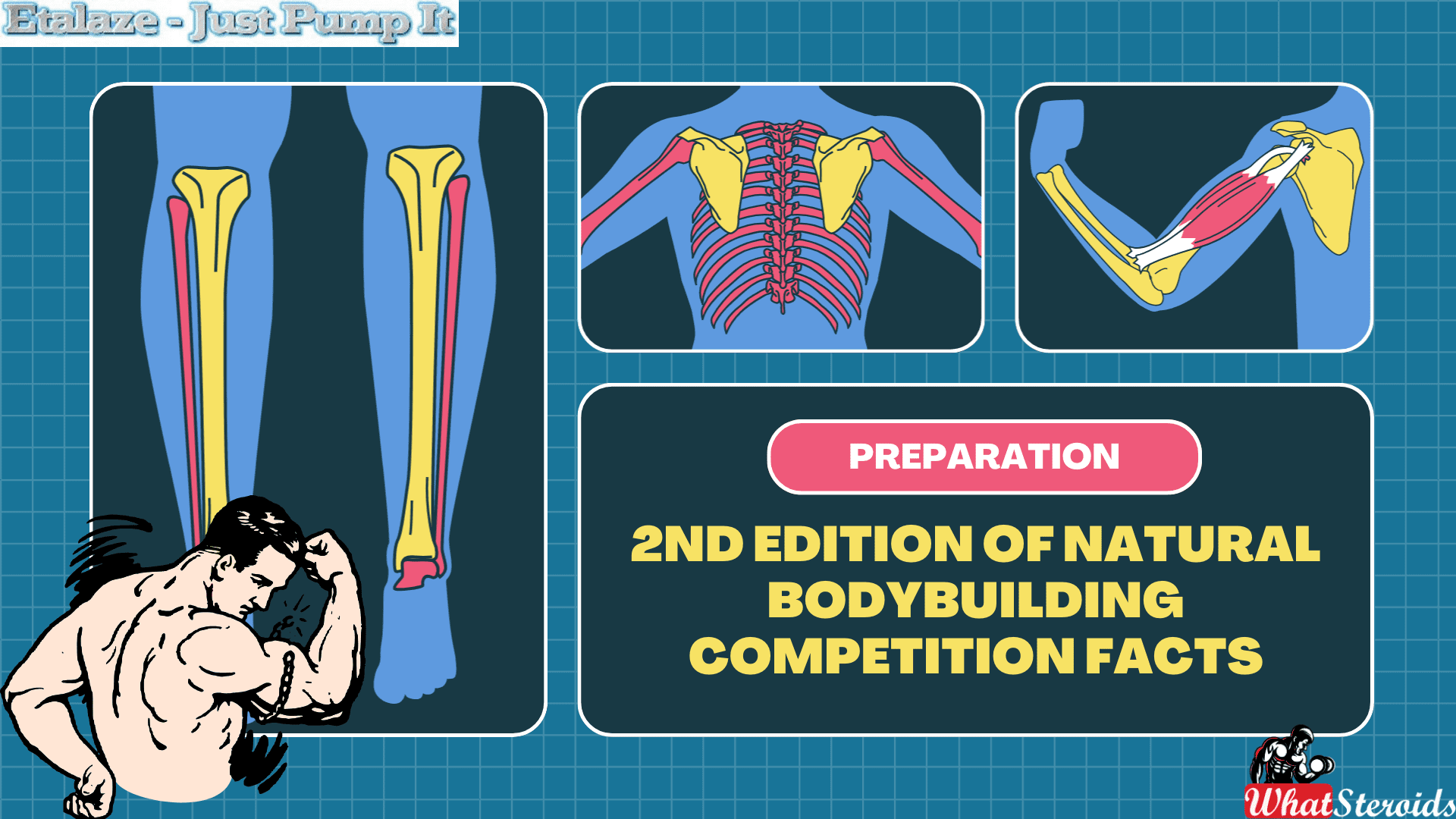
Natural bodybuilding competitions are designed to promote and celebrate athletes who build their physiques without the use of performance-enhancing drugs. These events emphasize fair play, health, and the natural development of muscle mass and definition.
The second edition of natural bodybuilding competitions has gained momentum globally, particularly focusing on drug-free athletes. These competitions are hosted by various organizations like the INBA/PNBA (International Natural Bodybuilding Association/Professional Natural Bodybuilding Association) and OCB (Organization of Competitive Bodybuilders).
In 2024, several notable events have been planned, including the INBA Natural Universe and INBA World Cup, both of which emphasize natural bodybuilding through rigorous drug testing policies. These events aim to showcase competitors who adhere to strict drug-free protocols, and winners often earn pro cards allowing them to compete in higher-level professional competitions.
These competitions focus on categories like men's bodybuilding, classic physique, and women's figure and bikini, among others. Athletes undergo polygraph and urine tests to ensure compliance with natural bodybuilding standards. The winners often receive medals, trophies, or pro status
-
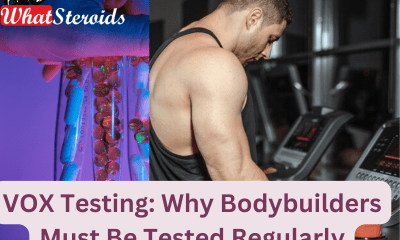
 Steroids2 years ago
Steroids2 years agoVOX Testing: Why Bodybuilders Must Have It Tested Regularly
-

 Steroids2 years ago
Steroids2 years agoShavers and Other Body Grooming Equipment for Bodybuilders In 2023
-

 Steroids2 years ago
Steroids2 years agoChatGPT and Other Avenues to Find Great Bodybuilding Coaches
-

 Steroids2 years ago
Steroids2 years agoBest Oil Recommendations Before Competition for Subtle Shimmer
-

 Steroids2 years ago
Steroids2 years agoPowerlifting Vs Power Building: Find Out the Big Difference and When to Shift Between the Two
-

 Anabolic Steroids1 year ago
Anabolic Steroids1 year agoLegality of Anabolic Steroids In Latin America
-

 Nutrition1 year ago
Nutrition1 year agoEverything Nutritional Food: What’s Too Much Or Too Little
-

 Beginners2 years ago
Beginners2 years agoTren Cycle for Beginners
-

 Bodybuilding Products12 months ago
Bodybuilding Products12 months agoTelmisartan In Bodybuilding: An Expert’s Advice
-

 Bodybuilding1 year ago
Bodybuilding1 year agoList of FDA-Approved Peptides
-

 Bodybuilding2 years ago
Bodybuilding2 years agoCompetition Prep Cycle for Pro Bodybuilders
-

 Anabolic Steroids10 months ago
Anabolic Steroids10 months agoHow Much Do You Know About B-AET? A Fat Burner You’ve Been Missing
-

 Bodybuilding1 year ago
Bodybuilding1 year agoChia Seeds in A Bodybuilder’s Diet: An Expert’s Advice
-

 Product Reviews10 months ago
Product Reviews10 months agoTop Vitamins for Skin Health
-

 Steroids11 months ago
Steroids11 months agoAnadrol Cycle: Benefits, Doses, Alternatives, etc.
-

 Bodybuilding7 months ago
Bodybuilding7 months agoPrimal Movements: Our Ultimate Guide for Maximum Results
-

 Anabolic Steroids8 months ago
Anabolic Steroids8 months agoJoint Stiffness: How to Manage It While on AAS
-

 Steroids10 months ago
Steroids10 months agoMajor Bodybuilding Peptides Explained
-

 Bodybuilding9 months ago
Bodybuilding9 months agoHormone Replacement Therapy (TRT) Cycle Guide
-

 Steroids9 months ago
Steroids9 months agoOmnitope (Oxytocin)
-

 Bodybuilding1 year ago
Bodybuilding1 year agoHow Much Is Too Much Cardio? Understanding Heart Rate Zones
-

 Anabolic Steroids1 year ago
Anabolic Steroids1 year agoStart The New Year Strong With These Tips
-
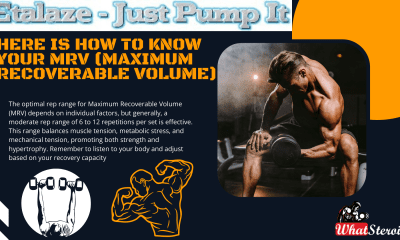
 Bodybuilding10 months ago
Bodybuilding10 months agoHere Is How To know Your MRV (Maximum Recoverable Volume)
-
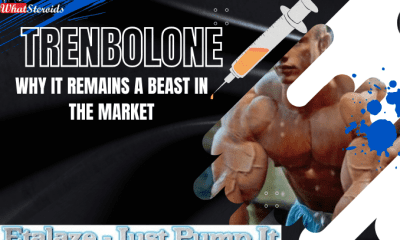
 Steroids1 year ago
Steroids1 year agoTrenbolone: Why it Remains A Beast In the Market
-

 Bodybuilding7 months ago
Bodybuilding7 months agoHow Effective is Bone Broth for Recovery?


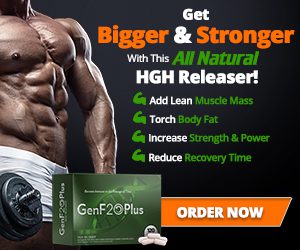





 Click here to buy 1-Test Cyp/DHB 100 by Dragon Pharma
Click here to buy 1-Test Cyp/DHB 100 by Dragon Pharma









